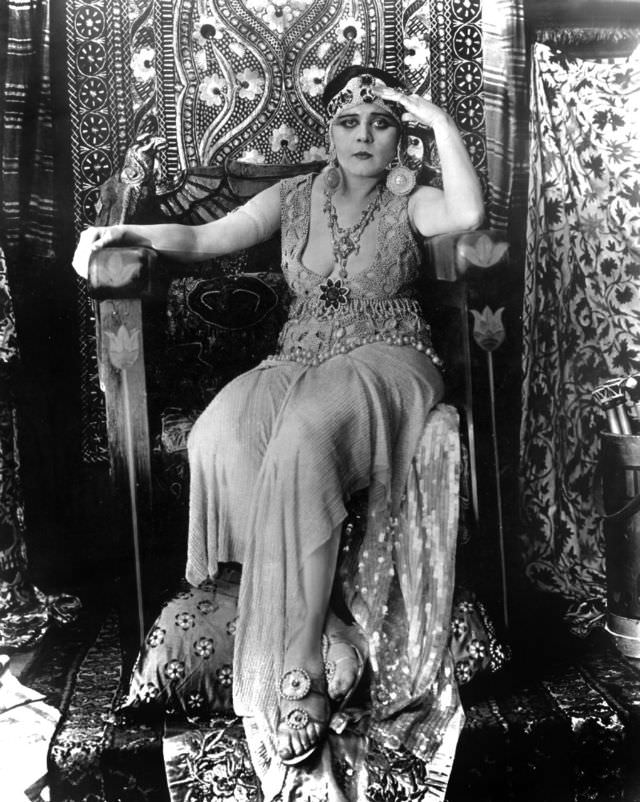Dubbed as one of cinema’s earliest sex symbols, Bara epitomized the “vamp” archetype—women who utilized their sensuality and allure to manipulate men. This persona, both on and off the screen, made Bara an intriguing figure in the public eye, and her casting as Cleopatra was both fitting and strategic, tapping into her established screen persona to bring the legendary queen to life.
Bara’s selection for the role of Cleopatra was a deliberate choice by the Fox Film Corporation, aiming to capitalize on her fame and the mystique that surrounded her. The casting tapped into the public’s fascination with both the actress and the historical figure she would portray, creating a buzz around the film long before its release. Bara’s reputation for portraying strong, seductive women made her the ideal candidate to embody Cleopatra, whose own legendary prowess in matters of love and power resonated with Bara’s on-screen image.
She immersed herself in the study of ancient Egyptian history and the life of Cleopatra VII to deliver a performance that was both convincing and respectful of the source material. The production of “Cleopatra” was a lavish affair, with extensive sets and costumes designed to recreate the opulence of ancient Egypt. Bara found herself at the center of this grandeur, performing in elaborate scenes that demanded both emotional depth and physical precision.
One of the most notable aspects of “Cleopatra” was its costume design, with Bara’s wardrobe becoming a focal point for its extravagance and historical inspiration. She appeared in a variety of costumes, each designed to showcase Cleopatra’s power, sensuality, and royal status.
































